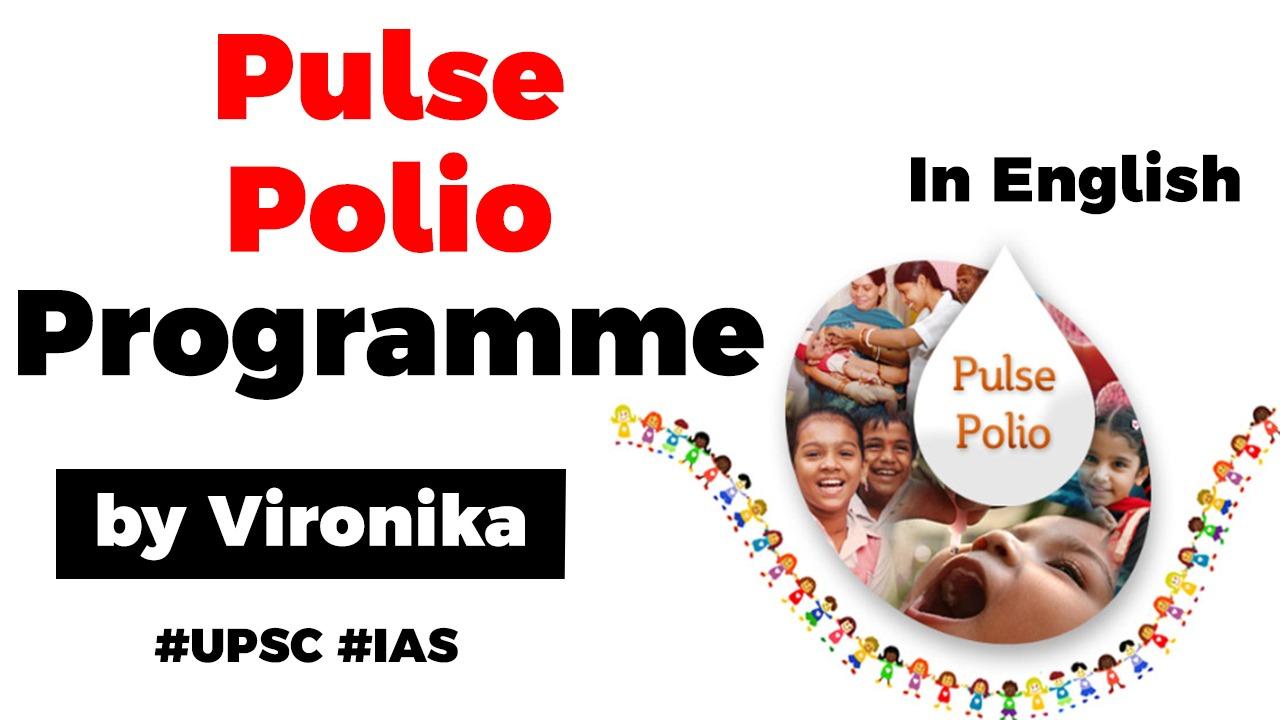Table of Contents
Pulse Polio Programme
- The beginning of this year’s Pulse Polio Programme was inaugurated from the Rashtrapati Bhavan itself. • To prevent the virus from coming to India.
- India launched the Pulse Polio immunisation programme in 1995, after a resolution for a global initiative of polio eradication was adopted by the World Health Assembly (WHA) in 1988.

- According to the Ministry of Health, the last polio case in the country was reported from Howrah district of West Bengal in January 2011.
- The WHO on February 24, 2012, removed India from the list of countries with active endemic wild polio virus transmission.
- The WHO defines polio or poliomyelitis as a highly infectious viral disease, which mainly affects young children.
- The virus is transmitted by person-toperson, spread mainly through the faecaloral route or, less frequently, by a common vehicle (e.g. contaminated water or food) and multiplies in the intestine, from where it can invade the nervous system and can cause paralysis.
- Under the programme,all states and Union Territories have developed Rapid Response Teams (RRT) to respond to any polio outbreak in the country.
- Emergency Preparedness and Response Plans(EPRP) have also been developed by states indicating steps to be undertaken in case of detection of a polio case.
- To prevent the virus from coming to India, the government has since March 2014 made the Oral Polio Vaccination(OPV) mandatory for those travelling between India and polio-affected countries such as Afghanistan, Nigeria, Pakistan, Ethiopia, Kenya, Somalia, Syria and Cameroon.
World Polio Day
- World Polio Day was established by Rotary International on 24th October to celebrate the birth of Jonas Salk, who developed a vaccine against poliomyelitis.
- The establishment of the Global Polio Eradication Initiative (GPEI) in 1988 reduced polio worldwide by 99%.
- There are three individual and immunologically distinct wild poliovirus strains: Wild Polio Virus type 1 (WPV1), Wild Polio Virus type 2 (WPV2) and Wild Polio Virus type 3 (WPV3).
- Symptomatically, all three strains are identical, in that they cause irreversible paralysis or even death.

- here are two types of vaccines to prevent infection. OPV (Oral Polio Vaccine): It is given orally as a birth dose for institutional deliveries, then primary three doses at 6, 10 & 14 weeks and one booster dose at 16-24 months of age.
- Injectable Polio Vaccine (IPV): It is introduced as an additional dose along with the 3rd dose of DPT under the universal immunization programme (UIP).
- Polio also called as Poliomyelitis. It is a viral disease that destroys the nerve cells present in the spinal cord causing paralysis or muscle weakness to some parts of the body. It is a contagious disease affecting the nervous system and is caused by Picornaviridae – a poliovirus.
- The virus is transmitted by person-to-person through the following ways –
- 1) Through the faecal-oral route.
- 2) By contaminated water or food.
- This virus primarily grows and multiplies in the intestine, from where it can attack the nervous system and will cause polio and paralysis on an advanced level.
- Poliomyelitis in nothing but the scientific term or synonym of the disease Polio. In very rare cases it causes muscle weakness resulting in an inability to move or paralysis. Poliovirus can spread from person to person or by food or water containing human faeces and less commonly from infected saliva.
- Some batches of oral polio vaccine, manufactured by Biomed, have been found to be contaminated with polio type 2 virus. The contamination is a serious concern as it endangers many people who have not IPV and are exposed to strain 2 making them vulnerable to VAPP.
- India’s efforts to polio eradication is commendable. It has a robust polio surveillance programme, which needs to be continued. Such strong vaccination and surveillance programme should be adopted for other preventable diseases too.
- Clean, safe drinking water and good sanitation are key to fighting the spread of polio and making polio eradication programmes. Thus, it is of utmost importance to improve sanitation and hygiene conditions in the country.
Latest Burning Issues | Free PDF






















 WhatsApp
WhatsApp